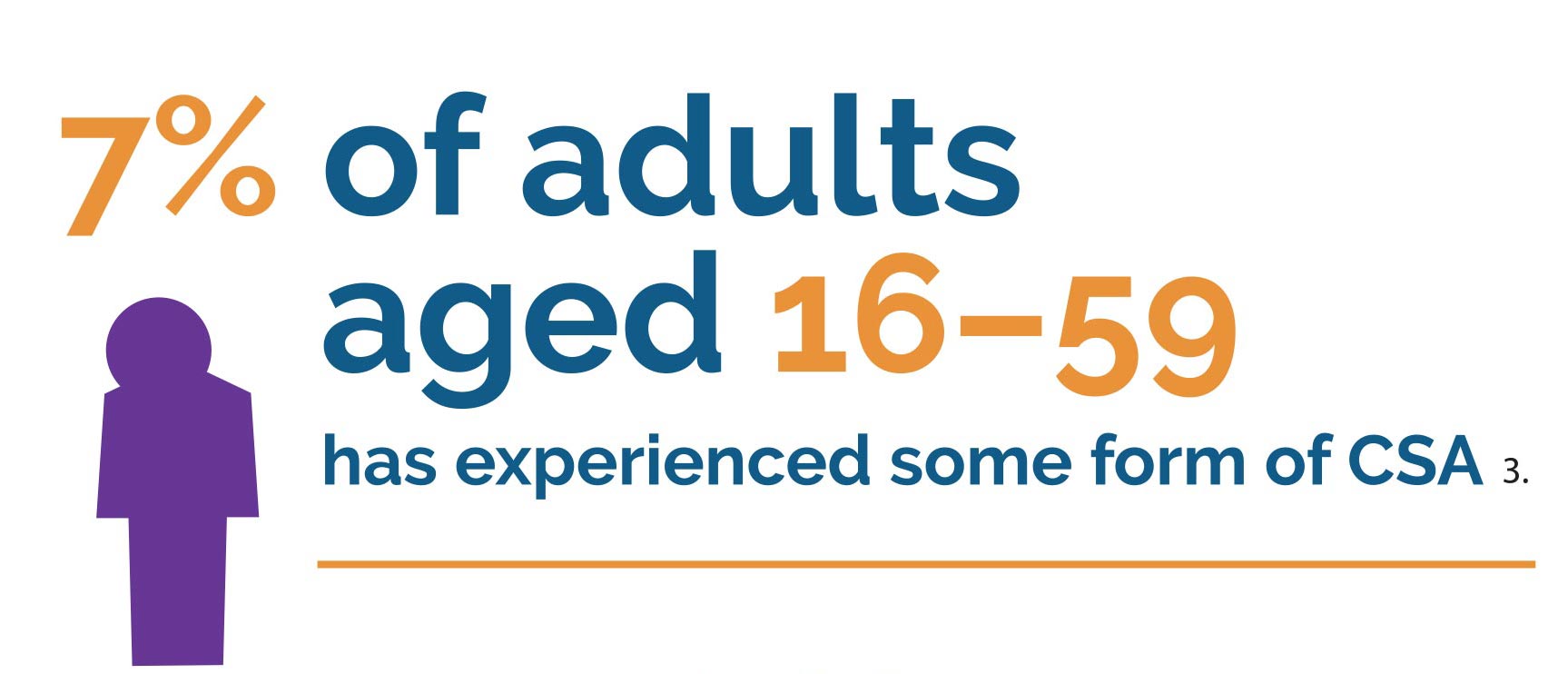The facts about child sexual abuse
Just as practitioners know from their work, research shows an undeniable link between childhood sexual abuse and negative life outcomes, sometimes lifelong.
Since the Savile Inquiry in 2012, services have seen a rise in the number of people talking about abuse they suffered in the past, sometimes many years or even decades ago.
What is child sexual abuse?
The Government’s definition of Child Sexual Abuse (CSA) as set out in Working Together to Safeguard Children (HM Government, 2015) is:
Child sexual abuse (CSA) involves forcing or enticing a child or young person to take part in sexual activities, not necessarily involving a high level of violence, whether or not the child is aware of what is happening. The activities may involve physical contact, including assault by penetration (for example, rape or oral sex) or non-penetrative acts such as masturbation, kissing, rubbing and touching outside of clothing. They may also include non-contact activities, such as involving children in looking at, or in the production of, sexual images, watching sexual activities, encouraging children to behave in sexually inappropriate ways, or grooming a child in preparation for abuse (including via the internet).

